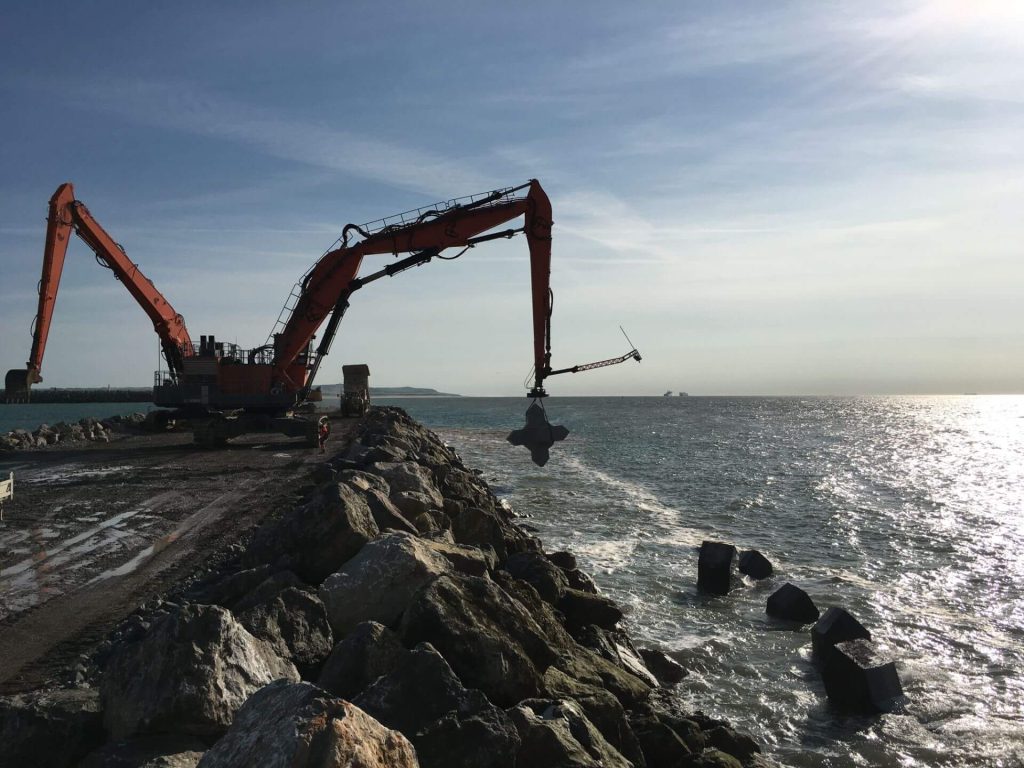Marine Construction Services – Building Foundations for Marine Ecosystems
Marine construction services play a crucial role in building and maintaining foundations for marine ecosystems. These services encompass a wide range of activities designed to support, protect, and enhance coastal and underwater environments. From building artificial reefs to constructing marine infrastructure, the initiatives are essential for environmental sustainability and ecosystem preservation.
Building Artificial Reefs:
One significant aspect of marine construction services is the creation of artificial reefs. These structures are meticulously designed and placed underwater to mimic natural reef systems, providing habitats for marine organisms. Artificial reefs can be made from various materials such as concrete, rocks, and even sunken ships. They serve as vital habitats for fish, corals, and other marine life, enhancing biodiversity and supporting commercial and recreational fishing industries. The process of constructing artificial reefs involves careful planning and environmental assessment to ensure minimal disruption to existing ecosystems. Locations are chosen based on factors like water depth, currents, and proximity to existing reefs or fishing grounds. Once deployed, these reefs attract marine life by providing shelter, breeding grounds, and feeding opportunities, thereby contributing to the overall health of marine ecosystems.

Protecting Coastal Infrastructure:
Marine construction also focuses on protecting coastal infrastructure from erosion and natural disasters. Coastal erosion poses a significant threat to shorelines, impacting communities, habitats, and economic activities. To mitigate these risks, engineers utilize various techniques such as seawalls, revetments, and breakwaters. These structures help stabilize shorelines, reduce wave energy, and preserve beachfront properties. Seawalls, for example, are constructed along coastlines to act as barriers against incoming waves and tides. They protect infrastructure like buildings, roads, and utilities from erosion and storm surges. Revetments, consisting of riprap or concrete blocks, are placed along vulnerable shorelines to dissipate wave energy and prevent sediment loss.
Enhancing Marine Accessibility:
Marine construction services also play a crucial role in enhancing accessibility to marine environments. This includes building docks, piers, and marinas that facilitate recreational boating, commercial shipping, and tourism activities. Docks and piers provide safe berthing facilities for vessels, enabling efficient loading and unloading of cargo and passengers. Marinas serve as hubs for recreational boaters, offering amenities such as fuel stations, restaurants, and maintenance services. They contribute to local economies by attracting tourists and supporting water-based recreational activities like fishing, sailing, and diving. Proper planning and environmental considerations are vital in marina construction to minimize impacts on water quality, wildlife habitats, and coastal aesthetics.
Sustainable Practices and Environmental Impact:
In recent years, there has been a growing emphasis on incorporating sustainable practices into marine construction projects. This includes using environmentally friendly materials, implementing erosion control measures, and promoting habitat restoration efforts. Techniques like bio-engineering, which uses natural materials such as vegetation to stabilize shorelines, are gaining popularity due to their minimal environmental impact.
Marine Bulkheading Construction Contractors in New York are essential for building resilient foundations for marine ecosystems. Through the creation of artificial reefs, protection of coastal infrastructure, enhancement of marine accessibility, and adoption of sustainable practices, these services contribute to the preservation and enhancement of marine environments. By balancing developmental needs with environmental conservation efforts, marine construction professionals play a vital role in ensuring the health and sustainability of our coastal and underwater ecosystems.